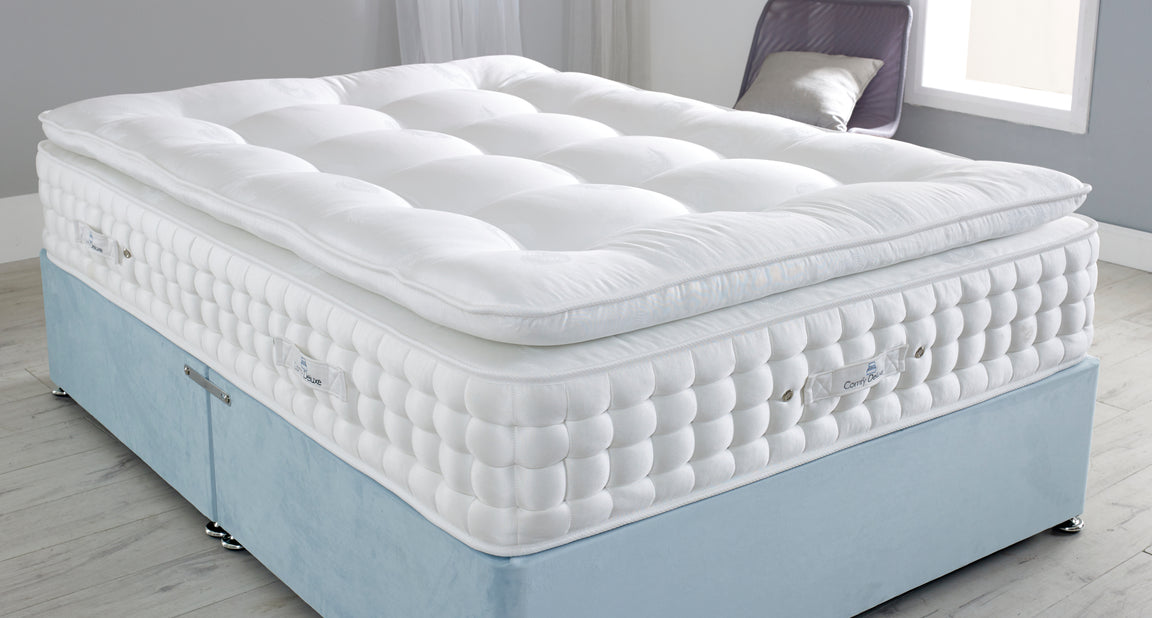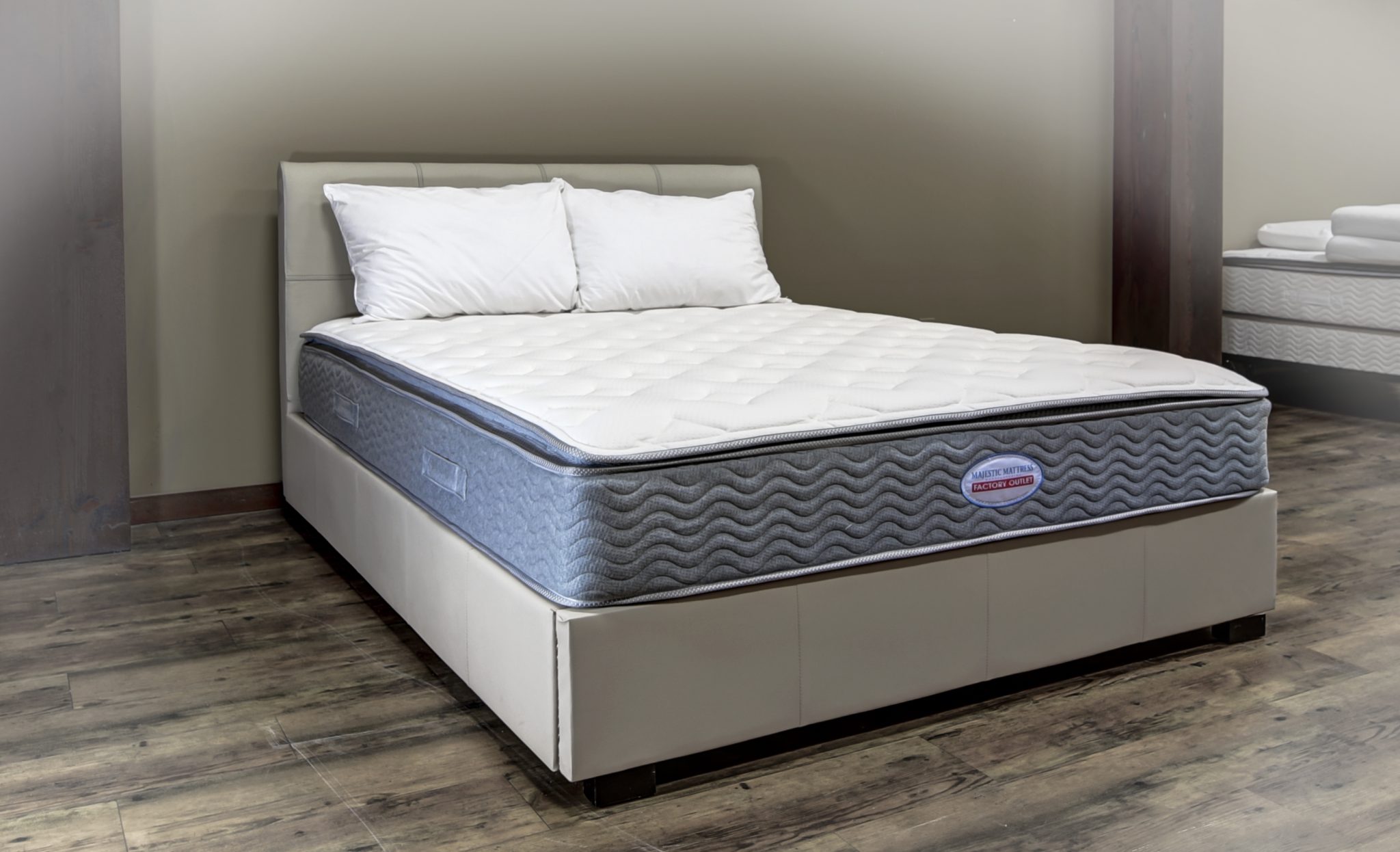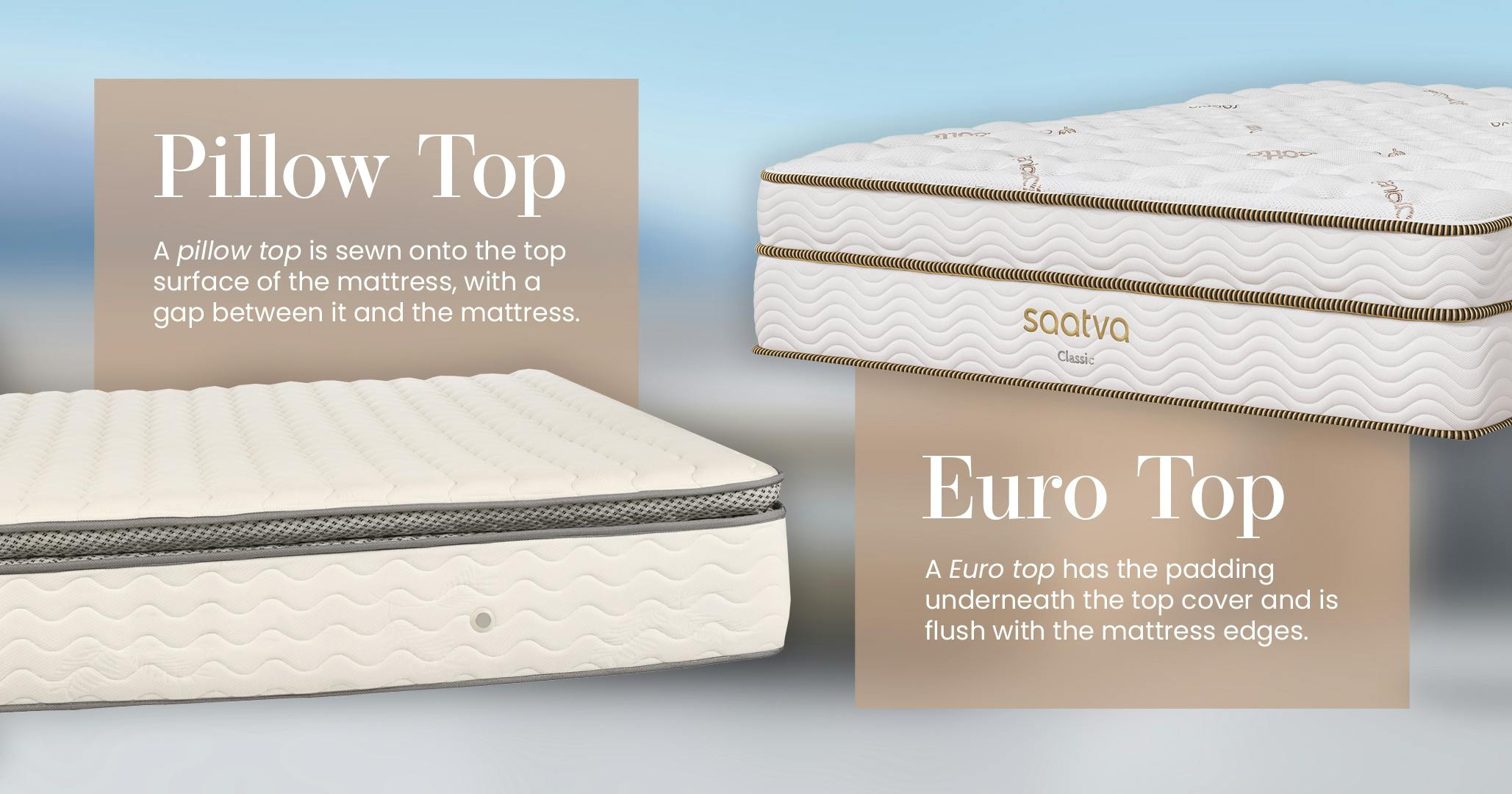Having a comfortable and supportive mattress is crucial for a good night's sleep. But what happens when your once plush pillow top mattress starts to develop dents and sag in the middle? Not only can this be uncomfortable, but it can also lead to back pain and restless sleep. Luckily, there are some simple steps you can take to fix a sagging pillow top mattress and restore its comfort and support. The first step in fixing a sagging pillow top mattress is to identify the cause of the problem. In most cases, it's due to the wear and tear of daily use. Over time, the padding in the pillow top can compress and lose its shape, resulting in dips and dents. Other common causes can include using the wrong foundation or frame, as well as inadequate support for heavier individuals. If you're dealing with a minor dent in your pillow top mattress, you may be able to fix it by simply fluffing and rotating the mattress. Start by fluffing the pillow top to redistribute the padding and regain its shape. Then, rotate the mattress 180 degrees to even out the wear and tear. This method may help in some cases, but it's not a long-term solution for larger dents.How to Fix a Sagging Pillow Top Mattress
If your pillow top mattress has a more significant dent, you may need to make some repairs to restore its comfort and support. One easy fix is to add a mattress topper made of memory foam or latex. These materials can contour to your body and provide extra cushioning to fill in the dip in your mattress. You can also try using a mattress pad or protector, which can add a layer of padding and help distribute your body weight more evenly. Another option for repairing a dent in a pillow top mattress is to add extra support underneath. You can do this by placing a piece of plywood or a mattress support board between the mattress and the foundation. This can help redistribute your body weight and prevent the mattress from sagging in the middle. Just make sure to measure the size of your bed frame and mattress before purchasing the support board to ensure a proper fit.How to Repair a Dent in a Pillow Top Mattress
One of the most common complaints of a sagging pillow top mattress is back pain. When the mattress loses its support, it can put strain on your spine and lead to discomfort and stiffness. If you suffer from chronic back pain, it's essential to choose a pillow top mattress that provides adequate support for your body. Look for a pillow top mattress with a medium to firm feel and good support for your spine. Mattresses made with memory foam or latex can be a great option as they can conform to your body and provide pressure relief. Additionally, look for mattresses with targeted support zones or extra lumbar support to help alleviate back pain.Best Pillow Top Mattresses for Back Pain
Prevention is always better than a cure, and this is especially true when it comes to your mattress. To avoid dealing with dents and sagging in your pillow top mattress, there are some simple steps you can take to maintain its shape and support. First, make sure you have the right foundation and frame for your mattress. A pillow top mattress needs a sturdy and supportive base to prevent sagging. Additionally, avoid sitting on the edge of your mattress, as this can cause it to compress and lose its shape over time. Rotating and flipping your mattress regularly can also help prevent uneven wear and tear.How to Prevent Dents in a Pillow Top Mattress
If you're a side sleeper, you may be more prone to developing dents in your pillow top mattress. This is because your body weight is concentrated on your hips and shoulders, which can cause the padding to wear out faster in those areas. To prevent this, look for a pillow top mattress with targeted support for side sleepers, such as a plush memory foam or hybrid mattress. You can also opt for a pillow top mattress with an adjustable comfort level, so you can customize the level of support and padding for your specific needs. Additionally, make sure to sleep with a pillow between your legs to help keep your spine aligned and reduce pressure on your hips and shoulders.Top Rated Pillow Top Mattresses for Side Sleepers
Fluffing your pillow top mattress regularly can help keep it in good shape and prevent dents and sagging. To fluff your mattress, start by removing all the bedding and pillows. Then, use your hands to push and pull the padding in the pillow top to redistribute it evenly. You can also gently hit or knead the mattress to help loosen up any compacted areas. Once you've fluffed the pillow top, rotate the mattress 180 degrees to even out the wear and tear. Repeat this process every few months to maintain the shape and support of your pillow top mattress.How to Fluff a Pillow Top Mattress
Aside from regular wear and tear, there are some other common causes of dents in pillow top mattresses. One of the main culprits is inadequate support from the foundation or bed frame. If your mattress doesn't have a sturdy and supportive base, it can lead to sagging and denting over time. Another cause can be using the wrong type of mattress for your body weight and sleeping habits. For example, if you're a heavier individual, you may need a mattress with more support and padding to prevent dents and sagging. Similarly, if you're a stomach sleeper, you may need a firmer mattress to keep your spine aligned and prevent your body from sinking in too much.Common Causes of Dents in Pillow Top Mattresses
When shopping for a pillow top mattress, it's essential to consider your specific needs and preferences. Some key factors to keep in mind include your preferred sleeping position, body weight, and any specific issues you may have, such as back pain or pressure points. In general, a medium to firm pillow top mattress can provide a good balance of support and comfort for most individuals. However, if you have specific needs, such as extra support for back pain or targeted pressure relief for side sleeping, make sure to choose a mattress that caters to those needs.How to Choose the Right Pillow Top Mattress for Your Needs
As mentioned earlier, rotating your pillow top mattress regularly can help prevent dents and sagging. To rotate your mattress, start by removing all the bedding and pillows. Then, grab the mattress on both ends and flip it 180 degrees. This will ensure that the head and foot of the mattress are now reversed, which can help even out the wear and tear. Make sure to rotate your pillow top mattress every 3-6 months, depending on how often you use it. If you sleep alone and on one side of the bed, you may be able to rotate it less frequently. However, if you have a partner or sleep in the middle of the bed, it's best to rotate it every 3 months to prevent uneven wear and tear.How to Rotate a Pillow Top Mattress to Prevent Dents
If you're a heavier individual, you may need a pillow top mattress with extra support to prevent dents and sagging. Look for mattresses with targeted support zones, such as reinforced edges or lumbar support, to cater to your body's needs. Additionally, opt for a mattress with a higher weight capacity and make sure to use a supportive foundation to prevent the mattress from sinking in the middle. Some top-rated pillow top mattresses for heavier individuals include the Beautyrest Black Hybrid X-Class Ultra Plush Pillow Top Mattress and the Serta iComfort Hybrid Blue Fusion 1000 Luxury Firm Pillow Top Mattress. These mattresses offer a combination of support and cushioning, making them ideal for those with a higher body weight. In conclusion, dealing with dents in a pillow top mattress can be frustrating, but there are solutions available to restore its comfort and support. By following these tips and choosing the right mattress for your needs, you can prevent dents and enjoy a restful and comfortable sleep every night.Top Pillow Top Mattresses with Extra Support for Heavy Individuals
The Benefits of Choosing a Pillow Top Mattress for Your Bedroom

Experience Ultimate Comfort and Support
 A good night's rest is essential for a healthy and productive life. Your bedroom should be a sanctuary where you can unwind and recharge your batteries. The key to achieving this is having a comfortable and supportive
pillow top mattress
. This type of mattress has become increasingly popular in recent years due to its many benefits.
A good night's rest is essential for a healthy and productive life. Your bedroom should be a sanctuary where you can unwind and recharge your batteries. The key to achieving this is having a comfortable and supportive
pillow top mattress
. This type of mattress has become increasingly popular in recent years due to its many benefits.
What is a Pillow Top Mattress?
 Before delving into the benefits, it's important to understand what exactly a pillow top mattress is.
Pillow top
refers to the extra layer of padding sewn onto the top of the mattress, giving it a plush and cushioned feel. This layer is typically made of foam, memory foam, or latex, and provides an additional layer of comfort and support.
Before delving into the benefits, it's important to understand what exactly a pillow top mattress is.
Pillow top
refers to the extra layer of padding sewn onto the top of the mattress, giving it a plush and cushioned feel. This layer is typically made of foam, memory foam, or latex, and provides an additional layer of comfort and support.
Relieves Pressure Points
 One of the main benefits of a
pillow top mattress
is its ability to relieve pressure points. Traditional mattresses can cause discomfort and pain, especially for those who sleep on their side. The plush top layer of a pillow top mattress conforms to your body's shape, distributing your weight evenly and reducing pressure on your shoulders, hips, and other sensitive areas.
One of the main benefits of a
pillow top mattress
is its ability to relieve pressure points. Traditional mattresses can cause discomfort and pain, especially for those who sleep on their side. The plush top layer of a pillow top mattress conforms to your body's shape, distributing your weight evenly and reducing pressure on your shoulders, hips, and other sensitive areas.
Durable and Long-Lasting
 Contrary to popular belief, a pillow top mattress is not just a luxurious add-on to a regular mattress. In fact, it can extend the life of your mattress. The extra layer of padding acts as a barrier, protecting the underlying mattress from wear and tear. This can prevent
dents
and sagging, making your mattress more durable and long-lasting.
Contrary to popular belief, a pillow top mattress is not just a luxurious add-on to a regular mattress. In fact, it can extend the life of your mattress. The extra layer of padding acts as a barrier, protecting the underlying mattress from wear and tear. This can prevent
dents
and sagging, making your mattress more durable and long-lasting.
Enhances Sleep Quality
 A comfortable and supportive mattress is crucial for getting a good night's sleep. Without proper support, you may toss and turn, causing interruptions in your sleep cycle. The plush top layer of a pillow top mattress provides the right amount of cushioning for your body, allowing you to fall into a deep and restful sleep.
A comfortable and supportive mattress is crucial for getting a good night's sleep. Without proper support, you may toss and turn, causing interruptions in your sleep cycle. The plush top layer of a pillow top mattress provides the right amount of cushioning for your body, allowing you to fall into a deep and restful sleep.
Suitable for All Sleeping Positions
 Whether you sleep on your back, stomach, or side, a pillow top mattress is suitable for all sleeping positions. The plush top layer conforms to your body's shape, providing support and relieving pressure points, no matter how you sleep. This makes it an ideal choice for couples with different sleeping preferences.
In conclusion, investing in a
pillow top mattress
is a wise choice for anyone looking to improve their sleep quality and overall well-being. It offers unparalleled comfort, support, and durability, making it a valuable addition to any bedroom. Say goodbye to restless nights and
dents
in your mattress and say hello to the ultimate sleeping experience with a pillow top mattress.
Whether you sleep on your back, stomach, or side, a pillow top mattress is suitable for all sleeping positions. The plush top layer conforms to your body's shape, providing support and relieving pressure points, no matter how you sleep. This makes it an ideal choice for couples with different sleeping preferences.
In conclusion, investing in a
pillow top mattress
is a wise choice for anyone looking to improve their sleep quality and overall well-being. It offers unparalleled comfort, support, and durability, making it a valuable addition to any bedroom. Say goodbye to restless nights and
dents
in your mattress and say hello to the ultimate sleeping experience with a pillow top mattress.































/GettyImages-97559899-506839adca25492885519d730f807ded.jpg)
















































































